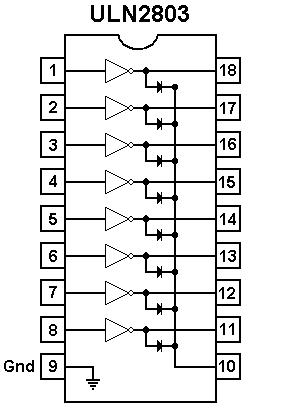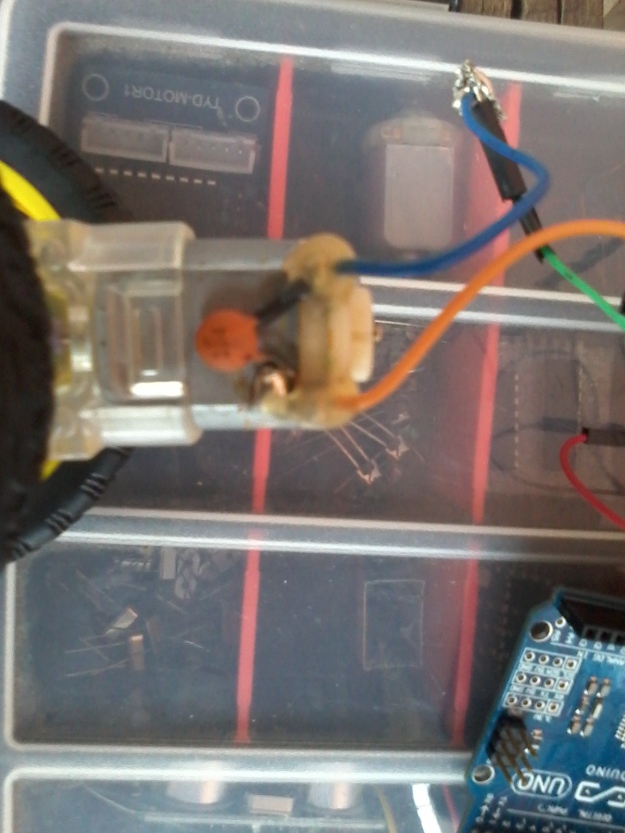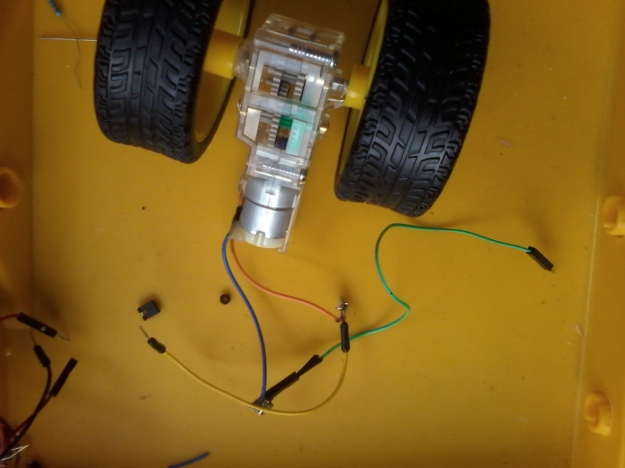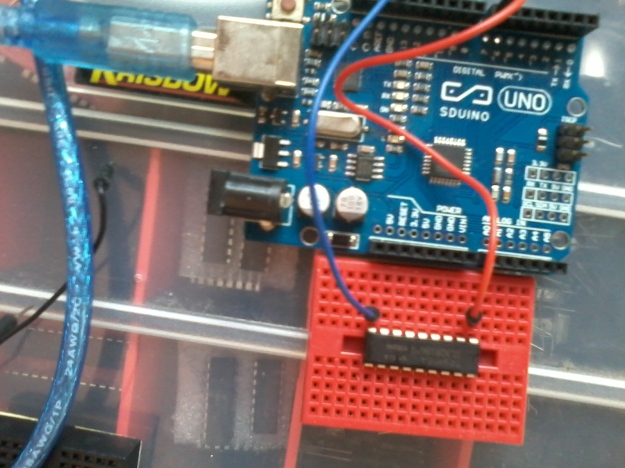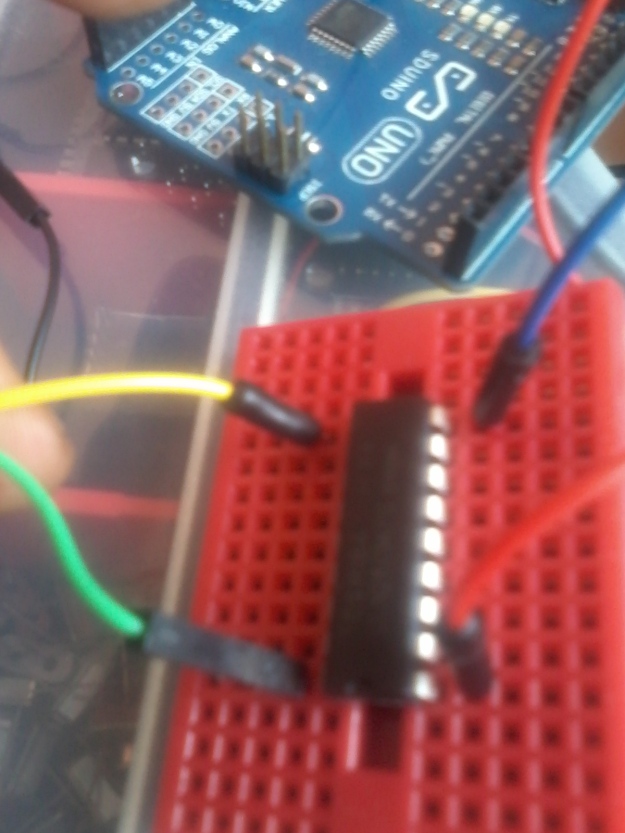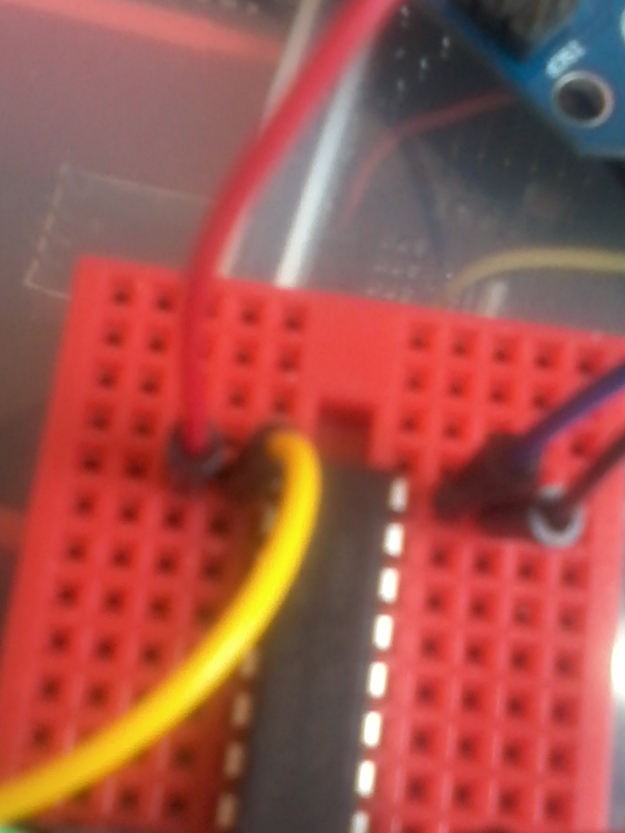by : Antonius (@sw0rdm4n)
Part List(s)
– 1 Ceramic Disc Capacitors 50V 100nF
– 1 Mini Breadboard
– 1 uln2803
– Arduino / any compatible board
– 1 Tamiya single Gearbox
– 2 Wheel for tamiya gearbox
– Jumper Wires
– 6 v battery holder
– 4 x 1,5v battery
– 1 dc motor (toy)
– Soldering iron and tin
ULN 20803 is a darlington array transistor with 8 channel(s) suitable to control devices up to 500mA , 50v, the specification can be downloaded from here http://www.adafruit.com/datasheets/ULN2803A.pdf.
Here in this example we will use uln2803 to control a motor dc that uses single gearbox, since uln2803 isn’t a h-bridge so we will only able to control it with single direction ( for h-bridge, we may use tlc5940 ).
Here’s uln2803 pins:
In this example, we will be using pin 1 as pwm pulse receiver from arduino pin 7 output. and pin 9 will be for ground connect to arduino’s ground. How to locate where’s pin 1 and another ? We can see on uln2803 that it has a “U” sign. The “U” sign determines that pin 1 is located on the left of that “U” sign.
First Step
Plug and solder jumper wire and ceramic disc capacitor into motor dc as follow:
Next plug the dc motor into tamiya single gearbox and plug some wheels. Here comes it :
As if this is a small vehicle, but it has no steering capabilities.
Second Step
connect pin 1 on uln2803 with pin 7 on arduino and connect ground pin (9) on uln2803 to ground pin on arduino.
Next, connect both jumper from motor dc to pin 18 and pin 10 on uln2803
Next, connect ground from battery to ground pin 9 on uln2803, plug it beside ground pin from arduino, and plug volt from battery to pin 10 on uln 2803, plug it besides motor dc jumper wire as follow:
Final step is to upload this code:
int motor = 7;
void setup() {
pinMode(motor, OUTPUT);
}
void loop() {
digitalWrite(motor, HIGH);
delay(300);
digitalWrite(motor, LOW);
delay(1000);
}
Once everything done, we can move the motor each 1 second about 0,3 second as follow:
